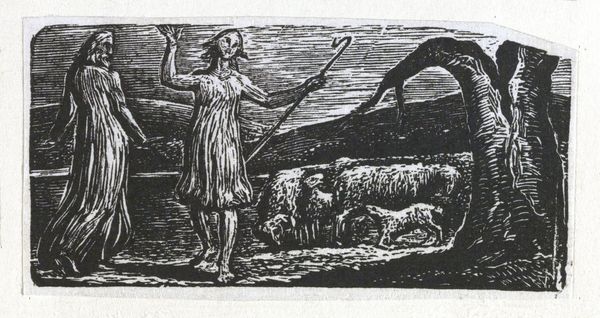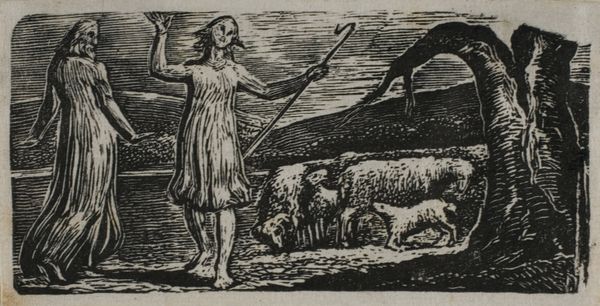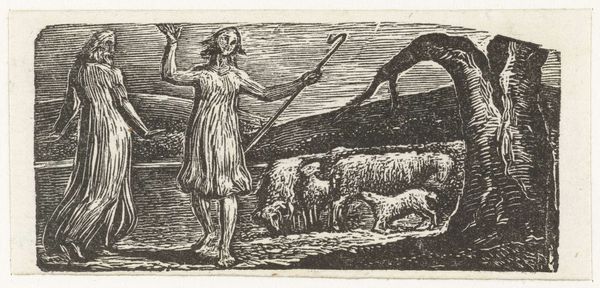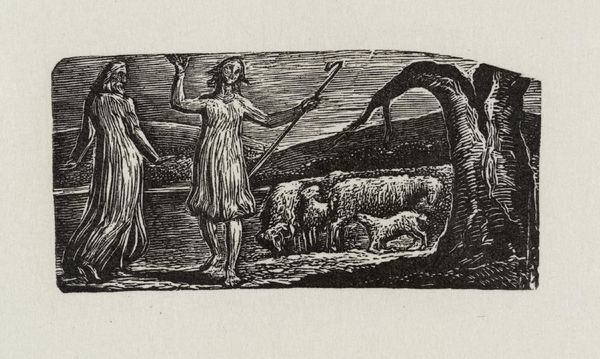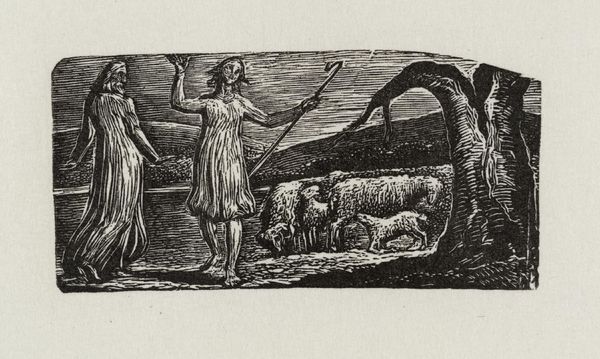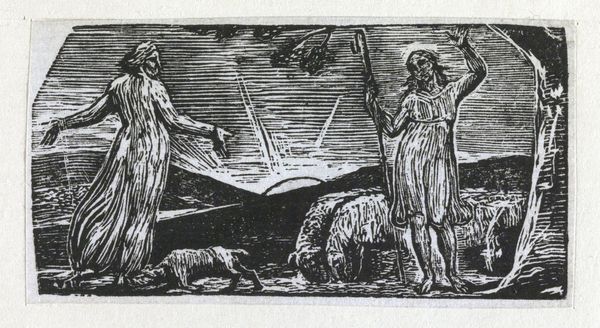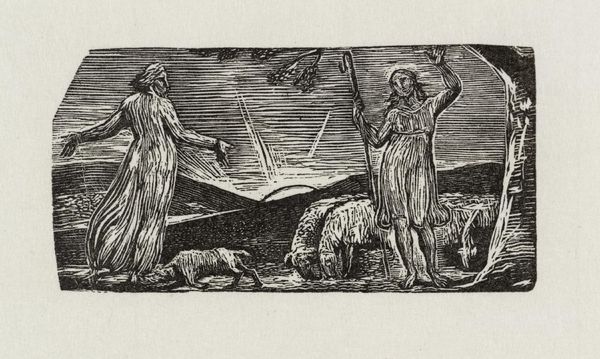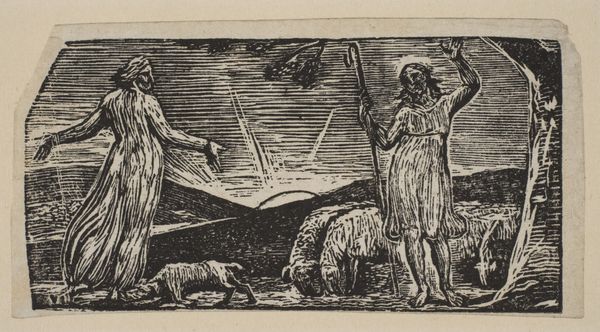
Dimensions: image: 36 x 73 mm
Copyright: CC-BY-NC-ND 4.0 DEED, Photo: Tate
Curator: Blake's wood engraving, "Thenot, with Colinet Waving his Arms in Sorrow," presents a pastoral scene infused with emotion. It's quite small, only 36 by 73 millimeters. What strikes you initially? Editor: The stark contrast between the black ink and the white paper creates a deeply melancholic atmosphere. The figures appear distressed, almost spectral. Curator: Indeed. Blake’s technique here, using the wood engraving, allows for these sharp contrasts, impacting the social understanding of mourning and loss through accessible printmaking. Editor: The composition too, is compelling. The figures dominate the foreground, their gestures directing our gaze to the sheep and the ominous presence of the tree. The linear texture adds depth, wouldn't you agree? Curator: Absolutely. And thinking about Blake's wider body of work, the engraving offers an interesting, accessible approach to the concepts present in his illuminated printing. Editor: Reflecting on this miniature world, I'm struck by how Blake uses such limited means to evoke powerful feelings. Curator: And the impact of the work, especially its production and accessibility, speak to Blake's egalitarian beliefs about art's role in society.
Comments
tate 8 months ago
⋮
http://www.tate.org.uk/art/artworks/blake-thenot-with-colinet-waving-his-arms-in-sorrow-a00115
Join the conversation
Join millions of artists and users on Artera today and experience the ultimate creative platform.
tate 8 months ago
⋮
Samuel Palmer was the most important of Blake’s followers, known as the Ancients. Palmer first met Blake in 1824. He described these illustrations to an imitation of the First Eclogue by the Roman poet Virgil as ‘visions of little dells, and nooks, and corners of Paradise’. Palmer’s art was particularly influenced by them. These prints appealed to the Ancients because they were the result of Blake’s experiments with a new medium; he had never engraved on wood before. Even at the age of sixty-four he wanted to make further explorations in his art. Gallery label, August 2004
